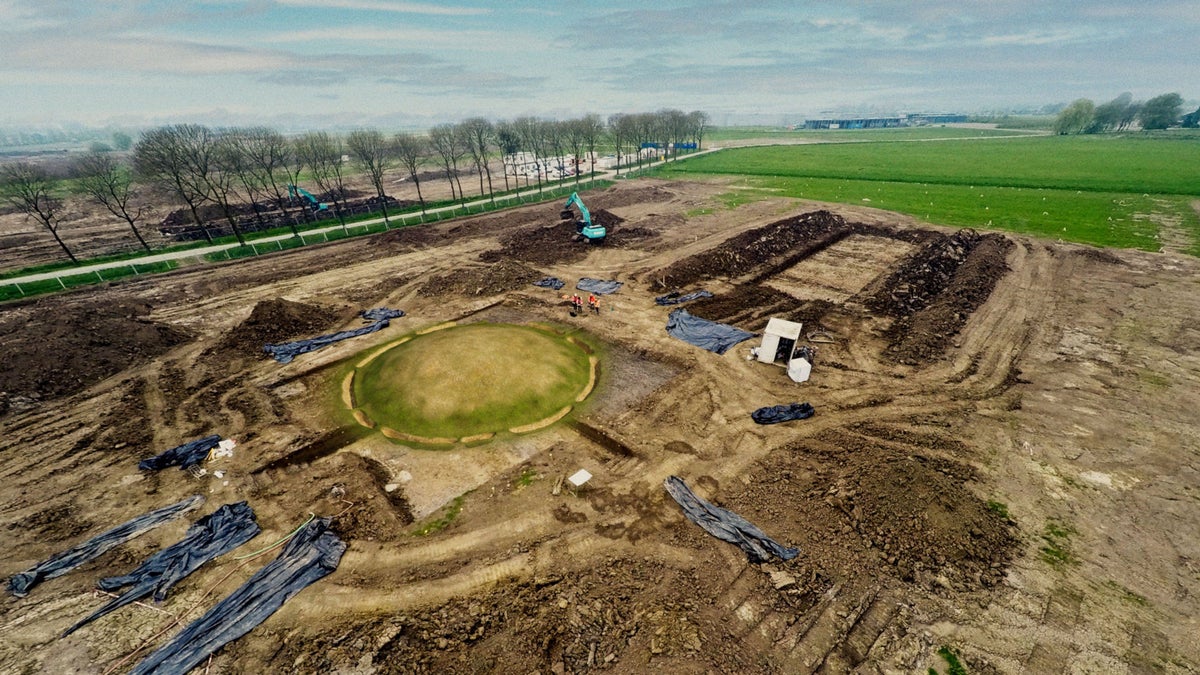4,000-year-old ‘Stonehenge of the Netherlands’ unearthed by Dutch archaeologists

Archaeologists have unearthed a 4,000-year-old structure in the Netherlands that they said was a religious site that served a similar purpose to the iconic Stonehenge.
The site, dubbed “Stonehenge of the Netherlands” by local media, includes an ancient burial mound containing the remains of nearly 60 men, women and children.
The mound, uncovered about 70km east of Rotterdam, also served as a solar calendar and had several passages through which the sun shined on the longest and shortest days of the year, the municipality of the town of Tiel noted in a statement.
“What a spectacular archaeological discovery! Archaeologists have found a 4,000-year-old religious sanctuary on an industrial site. This is the first time a site like this has been discovered in the Netherlands,” it said in a Facebook post.
“The largest mound served as a sun calendar, similar to the famous stones of Stonehenge in England,” the statement noted.
Archaeologists suspect the sanctuary may have been a “highly significant” place for the people of the time, helping them keep track of special days in the year.
They said the ancient people also performed rituals and buried their dead at the site, where they also unearthed poles that likely stood along pathways used for processions.
In one of the graves unearthed by archaeologists, a woman was buried with a glass bead from Mesopotamia, or present-day Iraq, reported Reuters.
The bead, which is the oldest one ever found in the Netherlands, suggests people who lived here may have been in contact with those nearly 5,000km away.
Over a million objects were uncovered at the site dating from the Stone Age, the Bronze Age, the Iron Age, the Roman Empire and the Middle Ages, scientists said.
Some of these will be showcased in a local museum in Tiel and at the Dutch National Museum of Antiquities.
For all the latest Science News Click Here
For the latest news and updates, follow us on Google News.

